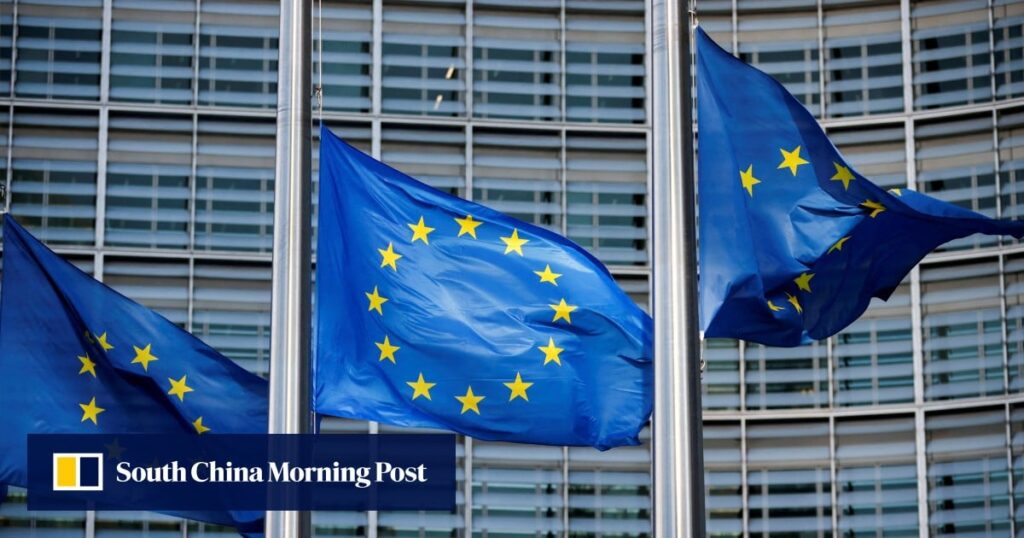“Usually the Stolen Documents Database, the Visa Information System or the Europol database are checked by border guards at the border,” she said.
Cooper added that the new system will allow them to rule out any potential risks before traveling.
“[With ETIAS,] “These assessments are done before the travellers arrive, with the ultimate aim being to make the border crossing much smoother,” she said.
The permit will be required to enter 30 European countries, but the length of stay will remain the same – up to 90 days within any 180-day period.
Cooper said the ETIAS would not make it more complicated for travellers from visa-exempt countries to travel to Europe.
“This will be very similar to the procedures that visa-free passport holders currently have to go through to travel to the United States, Canada, Australia and New Zealand,” she explained. “It will be an additional procedure, but it will not make travel any more difficult.”
Cooper said travellers could apply for the permit online, that the process was “no hassle” and would only take “a few minutes”.
“ETIAS will be a mostly automated IT system built to identify security, illegal immigration or high communicable disease risks posed by visa-exempt visitors travelling to Schengen countries,” the EU website says.
Applicants will need to provide their name, date of birth, place of birth, nationality, home address, parents' names, email address, telephone numbers, travel document details, education level and occupation details, and criminal record details.
Information is also required about the applicant’s planned stay in the country requiring ETIAS authorization, past travel history to war or conflict zones, and whether the applicant has recently received a decision ordering them to leave any country.
Hong Kong passport holders planning a short trip to Europe will need an ETIAS, but they will not need permission if they already have an EU work or student visa.
“ETIAS is a completely different system,” Cooper said. “To get a visa, you still have to go to a consulate and apply.”
“Visas take longer to process because they involve the consulate. They are also more expensive. Also, you can only get a visa for a limited period of time. ETIAS is valid for three years for multiple entries.”
 The EU's Isabella Cooper says the new EU authorisation system is easy to navigate and quick to complete. Photo: Xiaomei Chen
The EU's Isabella Cooper says the new EU authorisation system is easy to navigate and quick to complete. Photo: Xiaomei Chen
The ETIAS will cost 7 euros (7.50 US dollars), but there is a fee exemption for people under 18 and over 70.
Cooper advised travelers to get permission before making travel arrangements.
The rules are due to come into force in the first half of next year, but there will be a transition period of around six months during which travellers can visit Europe without an ETIAS.
Cooper said there would then be a grace period, the length of which has yet to be announced, during which visitors would be able to enter the EU one-time without an ETIAS.
She stressed that there is only one website where travelers can apply for ETIAS.
Cooper added that the agency is aware of at least 106 unofficial websites, some of which may be genuine intermediaries processing applications, but some may be fake.
Cooper added that anyone applying on behalf of another person, whether that be a family member or a tour guide for a client, would need the applicant's permission.
Thomas Gnocchi, European Union Ambassador and Representative to Hong Kong and Macau, said the door to Europe remains open for the people of Hong Kong.
“There will be no changes to the visa waiver system,” Gnocchi said. “What we are trying to do, what our office aims to do, is to increase people-to-people exchanges with Hong Kong.”
 Thomas Gnocchi, European Union Ambassador and Representative to Hong Kong and Macau, said Hong Kongers were welcome in Europe despite the new permit system. Photo: Xiaomei Chen
Thomas Gnocchi, European Union Ambassador and Representative to Hong Kong and Macau, said Hong Kongers were welcome in Europe despite the new permit system. Photo: Xiaomei Chen
As a separate measure, all non-EU nationals visiting the EU will have to register their biometric information, such as fingerprints and a facial image, under the EU Entrance/Exit System (EES) from this autumn.
Details of travel documents will also be recorded, as well as the dates and places of entry and exit to European countries. The start date will be announced in August.
Cooper said that because Schengen allows travellers to travel “from Portugal to Finland, from France to Estonia without showing their passport”, the EES could help prevent document fraud and monitor people's movements.
She pointed out that there is currently no central digital system for EU countries to check whether people are allowed to visit or have overstayed their welcome.
Cooper explained that border officials in member states would have to manually check passports to determine whether people had overstayed their permitted stay.
Yuan Chunning, chief executive of travel agency WWPKG, said travel authorization schemes and the collection of biometric information are a global trend, but the EU has been relatively slow to adopt them.
“Hong Kong travellers are very mature and the average tourist probably wouldn't mind that much,” Yuen said. “They'll probably even wonder why it's so slow.”
He added that Japan, a favourite travel destination for Hong Kongers, has been collecting biometric information for many years and Hong Kong residents are familiar with the process.
“Some of our less tech-savvy customers had trouble completing the paperwork for Australia, but with our help this was relatively easy to resolve,” Yuen said.
He added that travelers do not seem concerned about the storage of their personal information because they are already required to register it with airlines and their loyalty programs.



